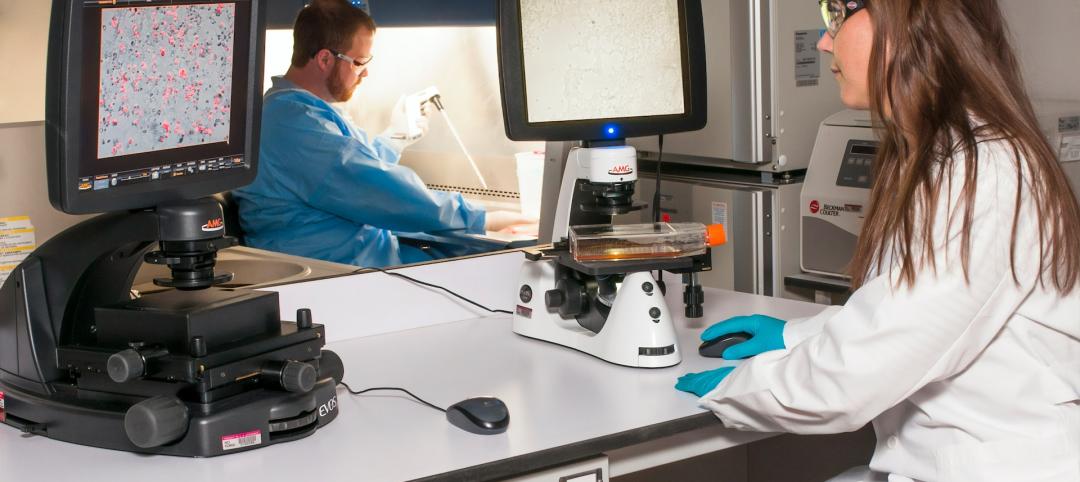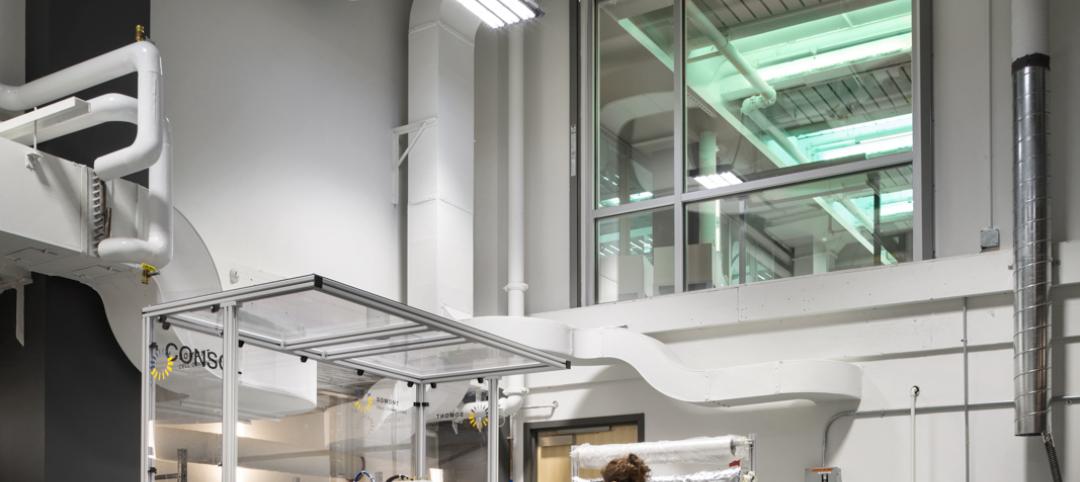Shorter research and development (R&D) timelines, ongoing cost pressures and sudden shifts in research priorities are driving new trends in lab design and location. Flexible space and access to talent are the keys to agile R&D, according to a new report from JLL, Journey to the next gen lab.
The average return on R&D investments among large biopharmaceutical firms has declined dramatically from 10.1% in 2010 to a paltry 3.2% in 2017. In the race for breakthrough innovations, companies are seeking collaboration and more flexible facilities.
“As a result of organizational cost pressures and a stronger focus on shortening the product lifecycle, R&D real estate is becoming multiuse,” says Roger Humphrey, Executive Managing Director and leader of JLL’s Life Sciences group. “The result is a drive toward highly flexible and attractive workplaces that appeal to not only scientific, but technical talent.”
Through interviews with executives at 15 leading biopharmaceutical and medical device companies, JLL has uncovered three trends pointing toward the future laboratory space.
1. Designing for flexibility and collaboration
Amidst rapidly shifting research priorities, scientists need space that can be easily reconfigured to accommodate different kinds of research and facilitate interaction with colleagues. Mobile benches and unassigned workspaces, for example, allow for fast changes in personnel and the type of work being performed. As one executive said, “Scientists want to have the flexibility that allows them to get their studies done as quickly as possible.”
“Behind the scenes, flexibility begins with infrastructure,” Humphrey said. “For example, you can hang retractable electrical cords from the ceiling so you’re not limited to placing equipment against a wall. You can build thick floor slabs into the laboratory corridors and hide technical infrastructure behind a façade so you can easily move people and equipment.”
2. Less wet lab, more computational science space
As R&D undergoes digital transformation, the science has become increasingly integrated with data and analytics. Once the dominant space for life sciences research, wet labs are shrinking while flex space and office space for computational science are growing as scientists spend more time analyzing data.
“A traditional R&D facility would consist of mostly lab space and a small proportion of office,” Humphrey said. “In a few years, those proportions will likely shift to equal parts web labs, flex space and office space for the data scientists.”
3. A focus on talent recruitment and retention
As illustrated in JLL’s annual Life Sciences Outlook report, biopharmaceutical companies have intensified their drive to be near leading academic research centers and the supportive R&D ecosystems that surround them. Despite high rents, cities like San Francisco, San Diego and Boston continue to attract leading companies that want access to resources and talent—including both laboratory scientists and the data scientists needed to work with today’s voluminous data.
The need for talent is also driving a growing focus on amenities, aesthetic appeal, state-of-the-art equipment and attention to sustainable design. Rather than hiding R&D space deep inside a facility, some biopharmaceutical companies are creating lab spaces on the perimeters of their facilities to showcase their cutting-edge technologies and abundance of natural light.
“We’re seeing a growing trend toward creating engaging, attractive labs and office workplaces,” Humphrey said. “The goal is to inspire creativity and foster well-being, with natural light, rich amenities and comfortable places for formal or informal collaboration.”
Related Stories
Giants 400 | Aug 22, 2022
Top 55 Laboratory Facility Engineering + EA Firms for 2022
Jacobs, Affiliated Engineers Inc., Burns & McDonnell, and WSP top the ranking of the nation's largest science and technology (S+T) laboratory facility engineering and engineering/architecture (EA) firms, as reported in Building Design+Construction's 2022 Giants 400 Report.
Giants 400 | Aug 22, 2022
Top 85 Laboratory Facility Architecture + AE Firms for 2022
Flad Architects, HDR, DGA, and Payette top the ranking of the nation's largest science and technology (S+T) laboratory facility architecture and architecture/engineering (AE) firms, as reported in Building Design+Construction's 2022 Giants 400 Report.
Giants 400 | Aug 22, 2022
Top 90 Construction Management Firms for 2022
CBRE, Alfa Tech, Jacobs, and Hill International head the rankings of the nation's largest construction management (as agent) and program/project management firms for nonresidential and multifamily buildings work, as reported in Building Design+Construction's 2022 Giants 400 Report.
Giants 400 | Aug 22, 2022
Top 200 Contractors for 2022
Turner Construction, STO Building Group, Whiting-Turner, and DPR Construction top the ranking of the nation's largest general contractors, CM at risk firms, and design-builders for nonresidential buildings and multifamily buildings work, as reported in Building Design+Construction's 2022 Giants 400 Report.
Giants 400 | Aug 22, 2022
Top 45 Engineering Architecture Firms for 2022
Jacobs, AECOM, WSP, and Burns & McDonnell top the rankings of the nation's largest engineering architecture (EA) firms for nonresidential buildings and multifamily buildings work, as reported in Building Design+Construction's 2022 Giants 400 Report.
Giants 400 | Aug 19, 2022
2022 Giants 400 Report: Tracking the nation's largest architecture, engineering, and construction firms
Now 46 years running, Building Design+Construction's 2022 Giants 400 Report rankings the largest architecture, engineering, and construction firms in the U.S. This year a record 519 AEC firms participated in BD+C's Giants 400 report. The final report includes more than 130 rankings across 25 building sectors and specialty categories.
| Aug 8, 2022
Mass timber and net zero design for higher education and lab buildings
When sourced from sustainably managed forests, the use of wood as a replacement for concrete and steel on larger scale construction projects has myriad economic and environmental benefits that have been thoroughly outlined in everything from academic journals to the pages of Newsweek.
Laboratories | Jul 17, 2022
Renovation is filling the need for life sciences lab space
Three experts from the firm DiMella Shaffer discuss the advantages and challenges of converting existing buildings.
Laboratories | Jun 29, 2022
The "collaboratory" brings digital innovation to the classroom
The Collaboratory—a mix of collaboration and laboratory—is a networking center being designed at the University of Denver’s College of Business.
Museums | Jun 28, 2022
The California Science Center breaks grounds on its Air and Space Center
The California Science Center—a hands-on science center in Los Angeles—recently broke ground on its Samuel Oschin Air and Space Center.
















